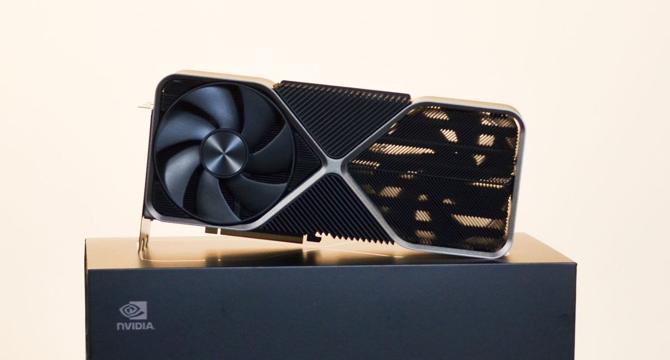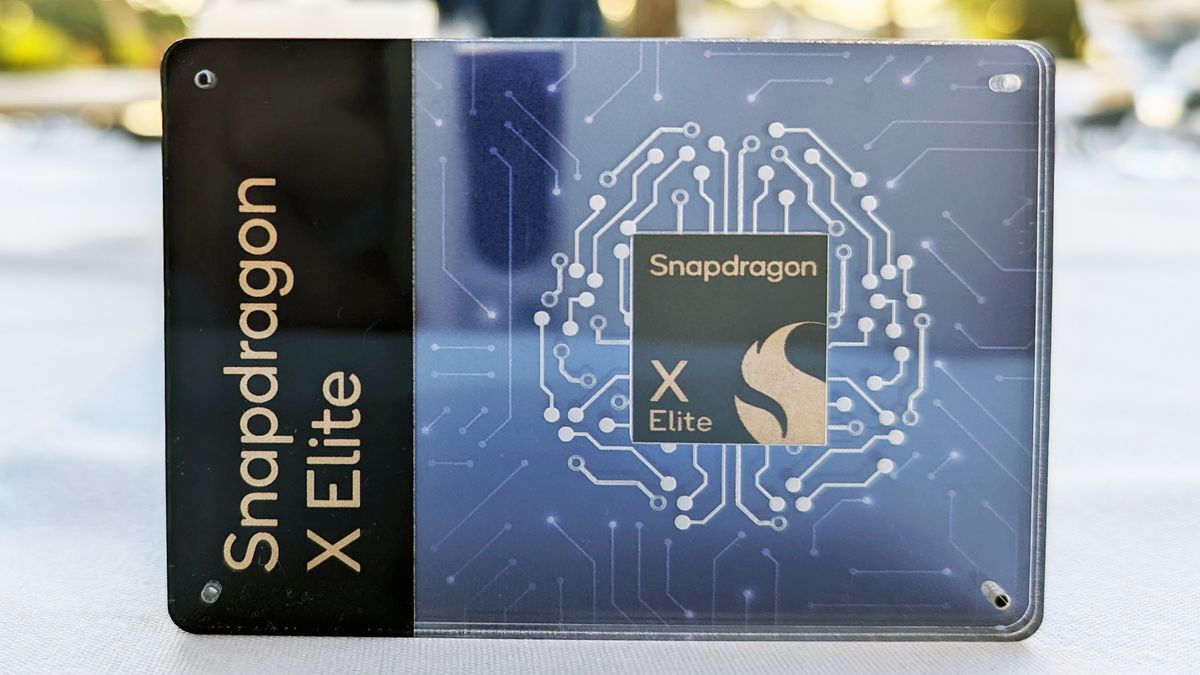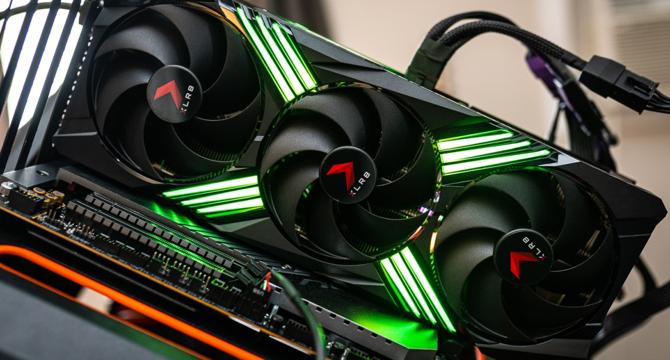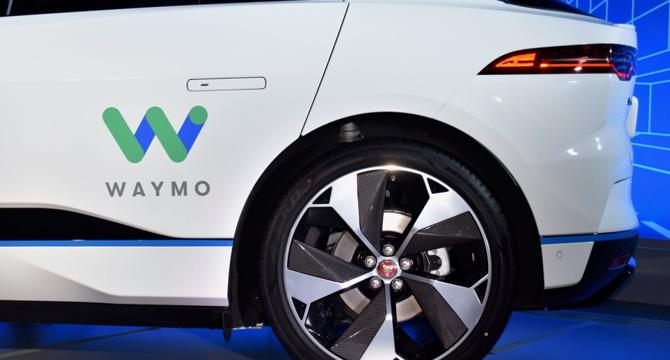Cloud News
Tech Radar
358

Image Credit: Tech Radar
Uh oh... Zotac just leaked Nvidia’s next-gen launch line-up, including RTX 5090 GPU with 32GB of VRAM
- Zotac has accidentally leaked details of Nvidia's next-gen launch line-up, including the RTX 5090 GPU.
- The leaked information suggests that the next-gen GPUs will include the RTX 5090, 5080, 5070 Ti, and 5070 models.
- Surprisingly, there is no mention of the rumored RTX 5060 GPU in the leaked details.
- The leaked information also reveals that the RTX 5090 GPU will come with 32GB of VRAM, which is an upgrade from the current-gen GPUs.
Read Full Article
21 Likes
Medium
252

Image Credit: Medium
How Can We Navigate AI Infrastructure to Find the Sweet Spot Between Availability, Performance…
- Advancements in AI infrastructure have led to near-perfect availability, making resource consumption the real issue.
- Choosing between Small Language Models (SLMs) and Large Language Models (LLMs) depends on model scale, scope, and alignment.
- CloudyFit proposes a context-driven optimization framework for AI infrastructure.
- Investing in optimization expertise can yield significant advantages, as seen in a retail company's case study.
Read Full Article
15 Likes
Tech Radar
27

Image Credit: Tech Radar
macOS Sequoia 15.3 beta brings Genmoji to Mac, allowing you to serve up custom emojis that really represent you
- Apple's macOS Sequoia 15.3 beta introduces Genmoji, allowing Mac users to create custom emojis.
- Genmoji works offline and requires Apple silicon Macs.
- Users can generate unique emojis based on prompts or photos.
- Genmoji will be available to developers initially and will roll out to the public beta and future macOS updates soon.
Read Full Article
1 Like
Tech Radar
27

Image Credit: Tech Radar
Intel throws shade at Arm PCs, claiming retailers get a ‘large percentage’ of devices returned – but Qualcomm is quick to strike back
- Intel interim co-CEO Michelle Johnston Holthaus has claimed that a large percentage of Arm-based PCs are returned due to software compatibility issues. The Qualcomm Snapdragon X chips power these machines in Microsoft's drive for Copilot Plus laptops. Qualcomm has quickly struck back, stating that their devices' return rates are within industry norms. The two companies did not back up their assertions with hard figures.
- The crux of the issue is that Arm is a different architecture to AMD and Intel's x86 chips, and most Windows apps are written for the latter, making emulation and compatibility a challenge when using Arm processors. Apple has made the move to Arm with its M-series silicon, and the motive behind the development is that Apple is transitioning fully to Arm.
- Microsoft’s equivalent, Prism emulation, is still in its early stages, so developers are not incentivised to code Arm-specific apps or games for what is a relatively small niche of laptops. Growing the hardware base is more difficult without the software support in place, and without hardware, motivating devs to write that native software is an uphill struggle.
- The rejection rate claims are plausible to an extent, and somewhat backed up by what has been seen online. But there is a lack of specifics. Intel and Qualcomm are merely putting their point of view across in the marketplace.
- The fact that often topselling laptops use Arm-based processors, despite the inherent issues, underlines their effectiveness. TechRadar’s number one laptop is a Snapdragon X-based machine. Analysts are predicting significant growth in Arm chips for Copilot Plus laptops, something that Intel is unlikely to be mentioning.
- The present issue seems to boil down to the weakness of the Arm architecture, which relies heavily on software developers writing for it. If the software and game developers are writing code for macOS, for example, they must - in effect - recode for Arm. This is a time-consuming process for something that only constitutes a small percent of the market.
- The situation isn’t new - Microsoft also faced problems getting developers on board with its Windows Phone OS - something that caused it to fail. The Silicon-based laptop market is emerging and developing slowly - everything must fall into place for the market to grow as fast as chipsets originally hoped, and this process will be gradual.
- The bottom line is that the rejection claims might have some weight behind them, but reaching a 30% market share, as some predict, won't happen overnight. As Intel interim CEO Michelle Johnston Holthaus said, 'There's no substitute for strong software compatibility'. The challenge for Arm-based PC manufacturers is to make their machines less problematic. Only then will they find acceptance among more mainstream users.
- Qualcomm predicts that Arm-based PCs could own 30% of the laptop market by 2028. However, this future projection can't be taken at face value since the chips' adoption rate is mostly contingent on native software and game availability.
- The Clawback: The deeply personal jousting between Intel’s interim co-CEOs and the CEO of Qualcomm has everything to do with a shortage of silicon capacity. Nevertheless, there is more to it than that. The development reflects tensions that have been simmering for years between leaders in the Silicon Valley about which company always gets to act as the semiconductor industry leader. For Intel and Qualcomm, the debate centres on which processor (Intel vs Qualcomm) will truly be the winner of 5G and who will ultimately own the mobile computing market
Read Full Article
1 Like
Discover more
- Programming News
- Software News
- Web Design
- Devops News
- Open Source News
- Databases
- Product Management News
- Operating Systems News
- Agile Methodology News
- Computer Engineering
- Startup News
- Cryptocurrency News
- Technology News
- Blockchain News
- Data Science News
- AR News
- Apple News
- Cyber Security News
- Leadership News
- Gaming News
- Automobiles News
Digitaltrends
183

Image Credit: Digitaltrends
Nvidia’s RTX 5080 may be better than the RTX 5090 in one small way
- The RTX 5080 may be the only RTX 50-series GPU to receive 30Gbps memory modules from the start.
- The RTX 5080 is expected to retain the 16GB memory and 256-bit bus from the RTX 4080.
- If equipped with the higher-speed memory, the RTX 5080 could experience a 34% increase in bandwidth compared to the RTX 4080 Super.
- There is a possibility of the 50-series refresh in the future using 3GB GDDR7 modules, potentially offering more VRAM.
Read Full Article
11 Likes
TechCrunch
101

Image Credit: TechCrunch
Nuon helps companies deploy their software into their customers’ cloud accounts
- Nuon, a 'bring your own cloud' (BYOC) platform, helps SaaS companies deploy their applications and software into customers' cloud accounts.
- Nuon offers a hybrid approach of SaaS and self-hosted deployment, allowing customers to have isolated and deeply integrated software while maintaining control over their data.
- Manual deployment into customers' clouds is expensive and difficult to scale, making Nuon's BYOC infrastructure platform a valuable solution for SaaS companies.
- Nuon recently raised $16.5 million in funding from investors including Uncork Capital, M12, Mantis VC, and Redpoint Ventures.
Read Full Article
6 Likes
Digitaltrends
18

Image Credit: Digitaltrends
The most innovative tech products of 2024
- HMD Fusion wins the title of the most innovative phone among the 392 tech products we've reviewed this year; the modular design of the phone and user-repairability make it stand out.
- Framework Laptop 16, which is a highly customizable laptop, won the title for the most innovative laptop of the year.
- Sony Bravia 9 wins the most innovative TV title due to its XR Backlight Master Drive, which uses mini-LED backlight technology with granular control to produce a subtle yet vivid image.
- Amazon Kindle Colorsoft, the first-ever kindle with a color display, is recognized as the most innovative tablet of the year.
- Neurable MW75 Neuro, the first headphones capable of tracking the user's level of mental focus, is named the most innovative headphones of the year.
- The PlayStation 5 Pro, which features advanced ray tracing and PSSR AI upscaling technology, wins the most innovative gaming hardware title due to its ability to upscale an image to look like 4K without compromising frame rate.
- RingConn Gen 2, the first smart ring capable of detecting sleep apnea, wins the most innovative wearable title.
- HP Omen Transcend 32, a monitor with a new QD-OLED panel and great gaming performance, is recognized as the most innovative monitor of the year.
- Samsung Music Frame, a speaker that doubles as a photo frame, wins the most innovative speaker title due to its impressive production of bass and Dolby Atmos Music support.
Read Full Article
1 Like
Tech Radar
445

Image Credit: Tech Radar
Microsoft’s mission to improve Windows 11 actually pays off with improved webcam tools
- Microsoft has added a new feature to Windows 11 allowing multiple apps to access the webcam simultaneously.
- Previously, users could only use one camera app at a time, limiting multitasking capabilities.
- This feature aims to improve accessibility, especially for the hard-of-hearing community.
- Microsoft is also working on additional webcam settings, such as resolution and frame rate controls.
Read Full Article
26 Likes
Guardian
156
Image Credit: Guardian
UK proposes letting tech firms use copyrighted work to train AI
- UK government proposes allowing tech firms to use copyrighted material for AI training.
- Proposal aims to resolve the standoff between AI firms and creatives.
- Companies like Google and OpenAI can use copyrighted content unless creators opt out.
- Creators can also demand a license fee for the use of their work in AI training.
Read Full Article
9 Likes
Tech Radar
101

Image Credit: Tech Radar
Google’s new Veo 2 beats OpenAI Sora with 4K AI video generation – here’s how to try it
- Google has announced its new AI video generation model, Veo 2.
- Veo 2 aims to compete with OpenAI's Sora in the AI video generation space.
- Google highlights Veo 2's improved understanding of physics and realistic output.
- Veo 2 surpasses Sora in capturing natural movement and offers output in 4K resolution.
Read Full Article
6 Likes
Tech Radar
73

Image Credit: Tech Radar
RTX 5060 rumor suggests it’ll have 8GB VRAM and I’m starting to wonder if Nvidia has lost the plot with next-gen GPUs
- The RTX 5060 models are rumored to have 8GB VRAM.
- The RTX 5060 Ti is expected to have 16GB VRAM.
- Both graphics cards will use the same board and chip with a 128-bit memory bus.
- The GPUs are expected to launch in late February to March of 2025.
Read Full Article
4 Likes
Dev
248

Image Credit: Dev
Refactoring a Lambda Monolith to Microservices Using Hexagonal Architecture
- AWS Lambda monoliths have several drawbacks like big package size, hard to enforce least privileges, and hard to test.
- It is recommended to decompose the monolithic Lambda function into individual microservices with each Lambda function dedicated to a single, well-defined task.
- Hexagonal Architecture, also known as the 'Ports and Adapters' approach, offers a way to refactor a Lambda monolith into microservices.
- Hexagonal Architecture allows us to modularize the application so it can be more flexible and maintainable.
- The preferred approach is to decompose the monolithic Lambda function into individual microservices, with each Lambda function dedicated to a single, well-defined task.
- Decomposing a monolith can be done using the 'decompose by business capability' approach.
- The Strangler Pattern allows us to migrate functionality piece by piece, gradually 'strangling' the monolith until it's fully decomposed.
- Hexagonal Architecture implementation is based on three components: Core Logic (Domain), Ports, and Adapters.
- Using Hexagonal Architecture, it's possible to gradually decouple the monolith into smaller and independent microservices to bring many potential benefits.
- Refactoring your Lambda setup with Hexagonal Architecture can transform a complex, tightly coupled monolith into a streamlined, testable and flexible microservice ecosystem providing a solid foundation for future growth.
Read Full Article
14 Likes
Serverless360
55

Image Credit: Serverless360
Turbo360: Beyond the Rebrand – A Year of Growth and Transformation
- Turbo360 underwent a rebrand from Serverless360 to signify its transformation and growth.
- The company expanded from a niche service management tool to a comprehensive cloud management platform.
- Key product updates included automatic cost anomaly detection, cost savings notifications, and identification of idle Azure resources.
- Turbo360 achieved global recognition through listings on the Microsoft Azure Marketplace and G-Cloud Framework.
Read Full Article
3 Likes
Dev
188

Image Credit: Dev
How to Deploy a Windows Server 2022 Virtual Machine on Microsoft Azure
- Installing a Windows Server 2022 Virtual Machine (VM) on Azure is an efficient way to leverage cloud computing capabilities with minimal hardware overhead.
- Azure provides scalability, cost-effectiveness, high availability, and secure infrastructure for hosting Windows Server 2022 VMs.
- The step-by-step guide includes setting up an Azure account, navigating to the Virtual Machines service, configuring basic settings, networking, disks, and connecting to the VM.
- Post-installation tips include installing updates, adding roles and features, enabling security measures, and setting up backups for disaster recovery.
Read Full Article
11 Likes
Digitaltrends
2k

Image Credit: Digitaltrends
Waymo is taking its robotaxis overseas for the first time
- Waymo is expanding its testing of robotaxis internationally.
- A fleet of autonomous vehicles will be deployed in Tokyo early next year.
- Waymo will partner with Nihon Kotsu, Tokyo's largest taxi operator, and GO, a popular taxi-hailing app.
- The experience in Tokyo will help Waymo adapt to left-hand traffic and driving behavior in densely populated urban environments.
Read Full Article
13 Likes
For uninterrupted reading, download the app